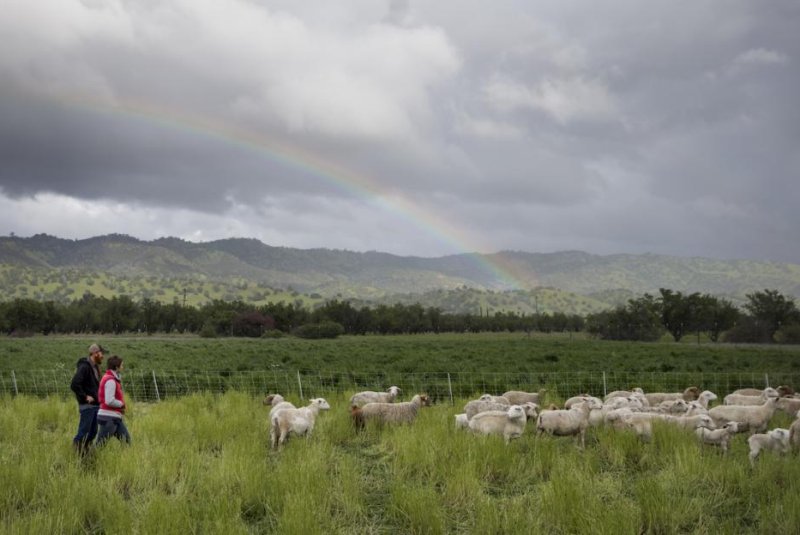As wildfires and drought become more common in California, research suggests grasslands and rangelands could offer superior carbon storage. Photo by Joe Proudman/UC Davis
July 11 (UPI) -- In places like California, increasingly prone to drought and wildfire, new research suggests grasslands --not trees -- provide the most reliable carbon storage.
The findings, published this week in the journal Environmental Research Letters, suggest grasslands and rangelands should be prioritized by conservation and cap-and-trade programs, especially in semi-arid regions.
"Looking ahead, our model simulations show that grasslands store more carbon than forests because they are impacted less by droughts and wildfires," Pawlok Dass, a postdoctoral scholar at the University of California, Davis, said in a news release. "This doesn't even include the potential benefits of good land management to help boost soil health and increase carbon stocks in rangelands."
Whereas trees store carbon in their trunk, branches and leaves, grassland plants store most of their carbon underground. When fire spreads across grasslands, most of the carbon remains in the ground.
"In a stable climate, trees store more carbon than grasslands," said Benjamin Houlton, director of the John Muir Institute of the Environment at UC Davis. "But in a vulnerable, warming, drought-likely future, we could lose some of the most productive carbon sinks on the planet."
Researchers simulated carbon storage systems under a variety of climate scenarios. In the first scenario, carbon emissions were stopped and warming was limited to 3 degrees Fahrenheit by 2100. In another, business-as-usual emissions pushed temperatures significantly higher. The third scenario featured periodic drought intervals, while a fourth hosted a megadrought lasting at least several decades.
Grasslands provided superior carbon storage in all scenarios but the first, a scenario that would require even more aggressive emissions reductions than targeted by the Paris Agreement to become a reality.
Researchers say their work is not intended to downplay the environmental and ecological important of forests and trees.
"Trees and forests in California are a national treasure and an ecological necessity," Houlton said. "But when you put them in assuming they're carbon sinks and trading them for pollution credits while they're not behaving as carbon sinks, emissions may not decrease as much as we hope."















